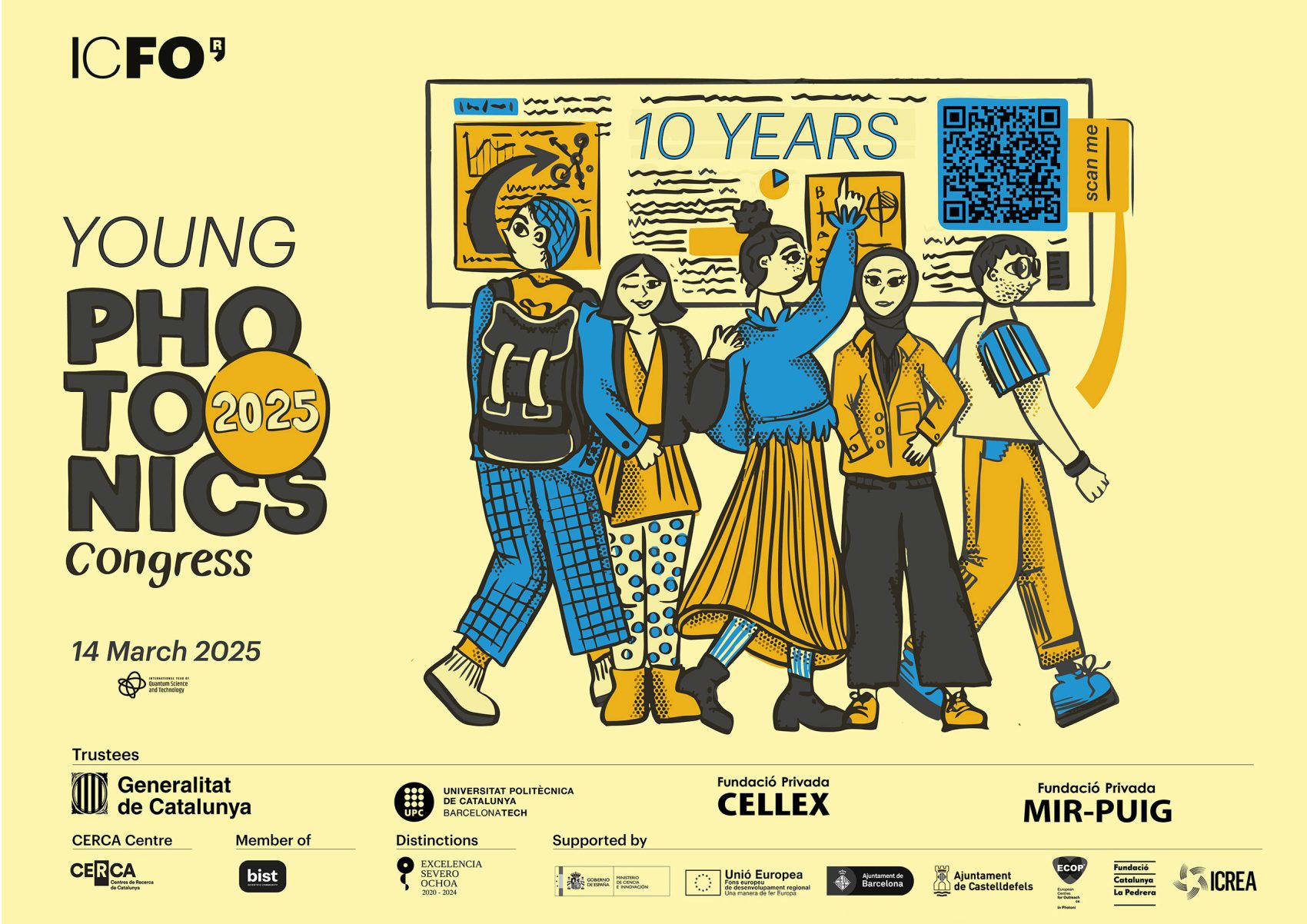
El Young Photonics Congress és un congrés científic protagonitzat per estudiants d’ESO i batxillerat que presenten els seus projectes de recerca.
Descobreix el món de la fotònica amb les xerrades flaix sobre la recerca que es fa a l’ICFO i amb els projectes de recerca de joves científics i científiques!
Celebrem 10 anys de passió per la fotònica!
programa
14 de març de 2025 – ICFO (CAstelldefels)
xerrades flaix
Fes clic en el + per més informacions
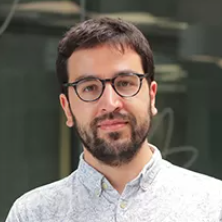
Luis Trigo Vidarte
Luis Trigo Vidarte és investigador postdoctoral del grup d’Optoelectrònica de l’ICFO, on treballa en temes de criptografia quàntica segura, com ara la distribució de claus quàntiques (QKD), la criptografia postquàntica (PQC) i altres protocols de seguretat quàntica més enllà de QKD, com ara la computació segura multiparty (SMPC). També està explorant el potencial de la informàtica fotònica.

María Marsal
María Marsal és llicenciada en Biologia per la UB. Es va doctorar en Biologia del Desenvolupament al Departament de Genètica de la UB. En el període postdoctoral ha combinat la seva recerca en Biologia amb l’ús de microscòpia òptica (CSIC i ICFO). És part de l’equip responsable de la microscòpia òptica de super resolució a l’ICFO.
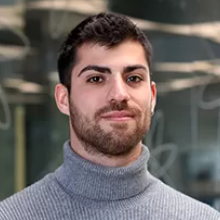
Miguel Dosil
Miguel Dosil és graduat en Física per la Universitat d’Oviedo. La curiositat per la ciència dels semiconductors i l’òptica el va portar a Madrid a fer un màster en materials i fotònica. Més tard, es va unir a l’ICFO per fer el doctorat dins del grup de Nanomaterials Optoelectrònics Funcionals. El seu treball tracta sobre l’estudi de fonts de llum infraroja basades en punts quàntics i les possibles aplicacions en futures tecnologies.
PROJECTES
Fes clic en el + per més informacions (tots els resums són en anglès)
Recomanem fer servir Google Chrome als usuaris de MacOs.
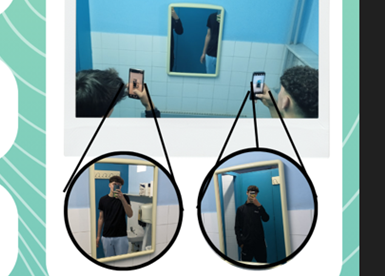
Principi de Reciprocitat de Helmholtz (If I see you, you see me)
Clàudia Ribas Burón, Hugo Horro Soto, Ignacio Álvarez Carranza, Naia Hurtado Suñer, Roger aguilera Pozo
Institut Salvador Dalí – El Prat de Llobregat (4rt ESO)
Docent: Marta Balletbó
When travelling in a train or in the metro and going through a tunnel, the exterior will be almost totally dark. If, by any chance, we glance at the window crystal, we will probably see somebody’s face and part of the body. It is important then to be aware of the fact that if we see that person, he or she can see us as well. This is due to Helmholtz reciprocity Principle of the light ray based on its electromagnetic nature. The energy flows both ways. With two cellphones and using the mirror at our high school toilet, we tested Von Helmholz’s Principle. And it worked.
We plan on placing a light mirror in our ICFO scientific poster so that in the photonic congress, people in pairs can also experience the principle.
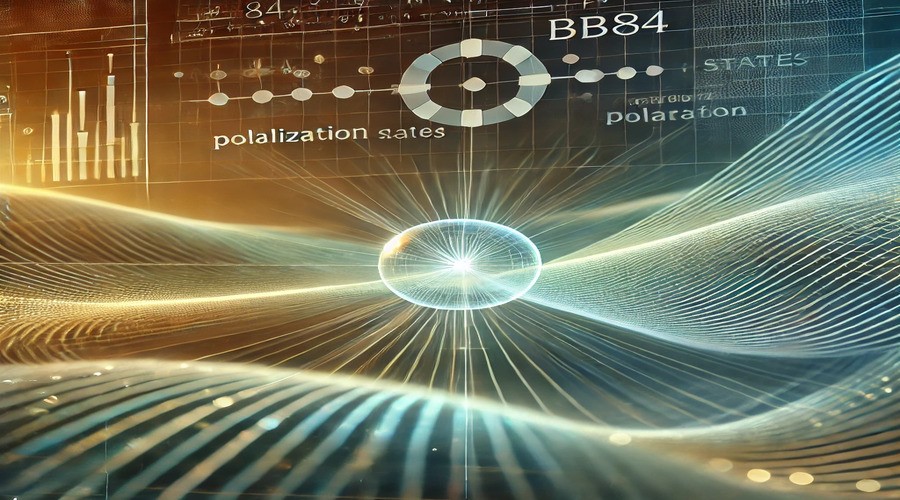
Estudi del protocol quàntic BB84
Júlia Querol Madueño
Institut Dertosa – Tortosa (2 bat)
Docent: Joan Arias López
The research aims to verify the operation and security of the BB84 quantum protocol, as well as to understand the historical background that, as a whole, has led to this level of development in cryptography. It uses a simulation with photons to check the security of the protocol.
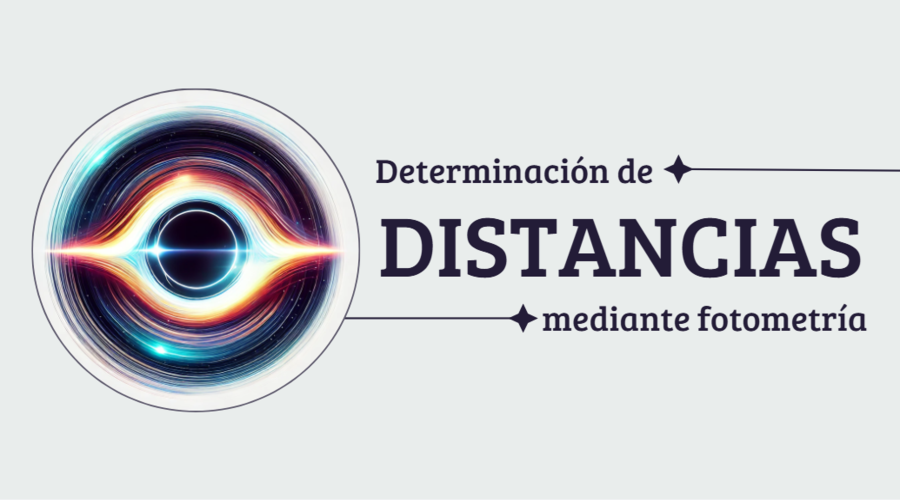
Determinació de distàncies mitjançant fotometria
Hugo Camacho Ruiz
Col·legi Santo Àngel – Gavà (2 bat)
Docent: Sonia Tarancón Sanz
This study examines photometry to calculate the distance to a quasar. Using a telescope and a CCD camera, images were processed, correcting noise and variations. With differential photometry and reference stars, the distance to the quasar was resolved, validating the effectiveness of this technique.
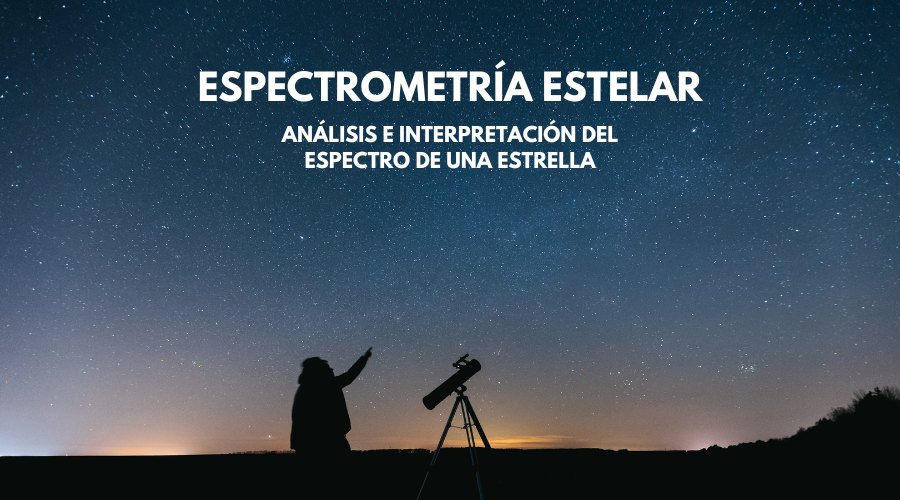
Espectrometría estelar (Análisis e interpretación del espectro de una estrella)
Gerard Fernández Calzas
Col·legi Santo Àngel – Gavà (2 bat)
Docent: Sonia Tarancón Sanz
This research demonstrates that stars can be studied without physical samples, using a cost-effective 3D-printed spectrometer. The device, tested in a small observatory, analyzed Vega and Capella’s spectra, highlighting key features like Vega’s Balmer lines and Capella’s peak temperature. It also aims to make astrophysics more accessible to students and amateurs.
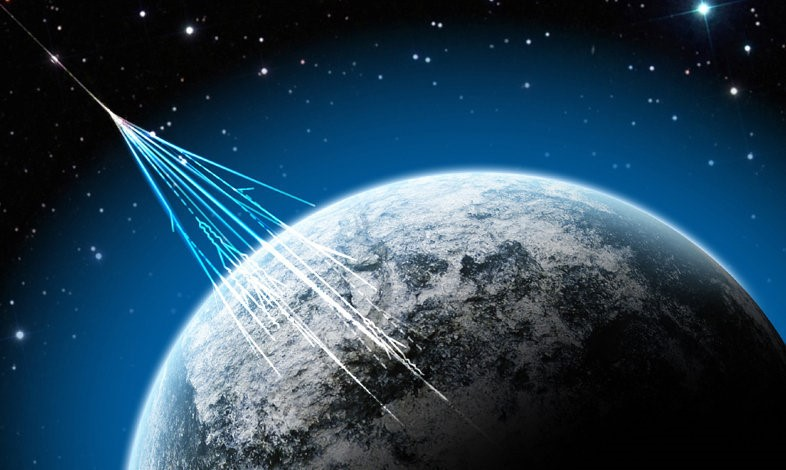
Missatgers de l'univers
Gerard Olona Riera
Sagrada Familia – Gavà (2 bat)
Docent: Daniel Parcerisas Brosa
This project studies muons, subatomic particles from cosmic rays, by using Cosmic Watch and MiniPIX detectors. It focuses on their behavior in Earth’s atmosphere, and factors affecting detection, like altitude, density, and environment.
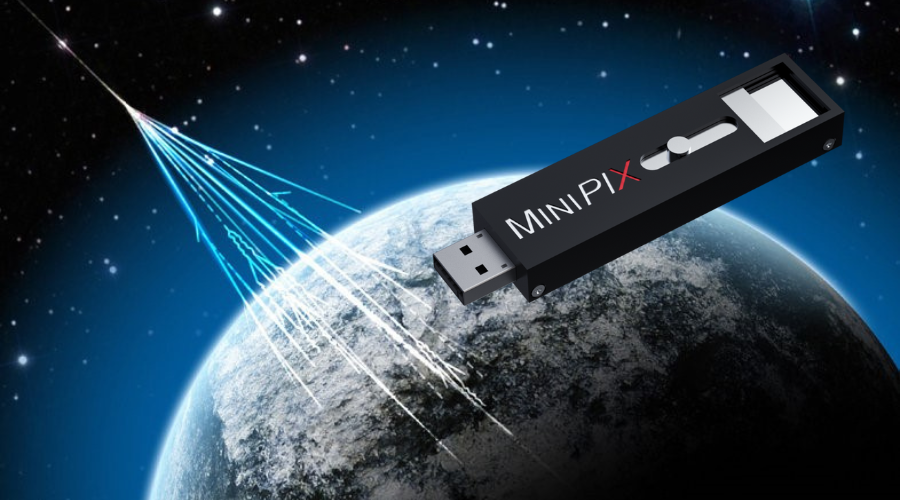
Model Clàssic i Relativista a la Física de Partícules
Nil Villanueva Ponce
Sagrada Familia – Gavà (2 bat)
Docent: Daniel Parcerisas Brosa
The study of relativistic theory through several experiments using a MiniPIX detector to measure α, β, and µ particle velocities. This verified Einstein’s model and the Bethe-Bloch equation while highlighting mathematical methods and challenges in experimental physics.
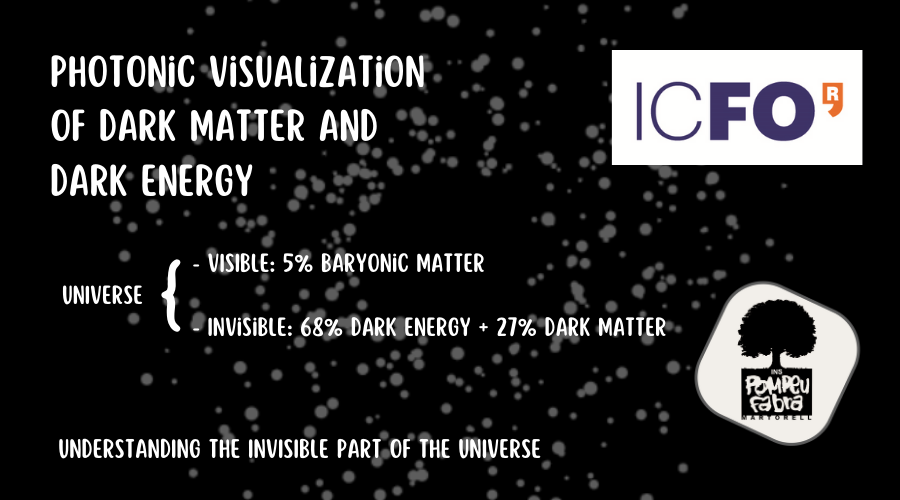
Photonic Visualization of Dark Matter and Dark Energy
Eric Castro Luna, Miguel Ángel Szabó García, Pedro Diéguez San Martín
Institut Pompeu Fabra – Martorell (1 bat)
Docent: Francesc Pérez García
This interactive simulation leverages photonic effects to visualize the invisible dynamics of dark matter and dark energy. By adjusting key parameters through intuitive controls, users explore cosmic phenomena through light-based visualizations, making complex astrophysical concepts more accessible and engaging.
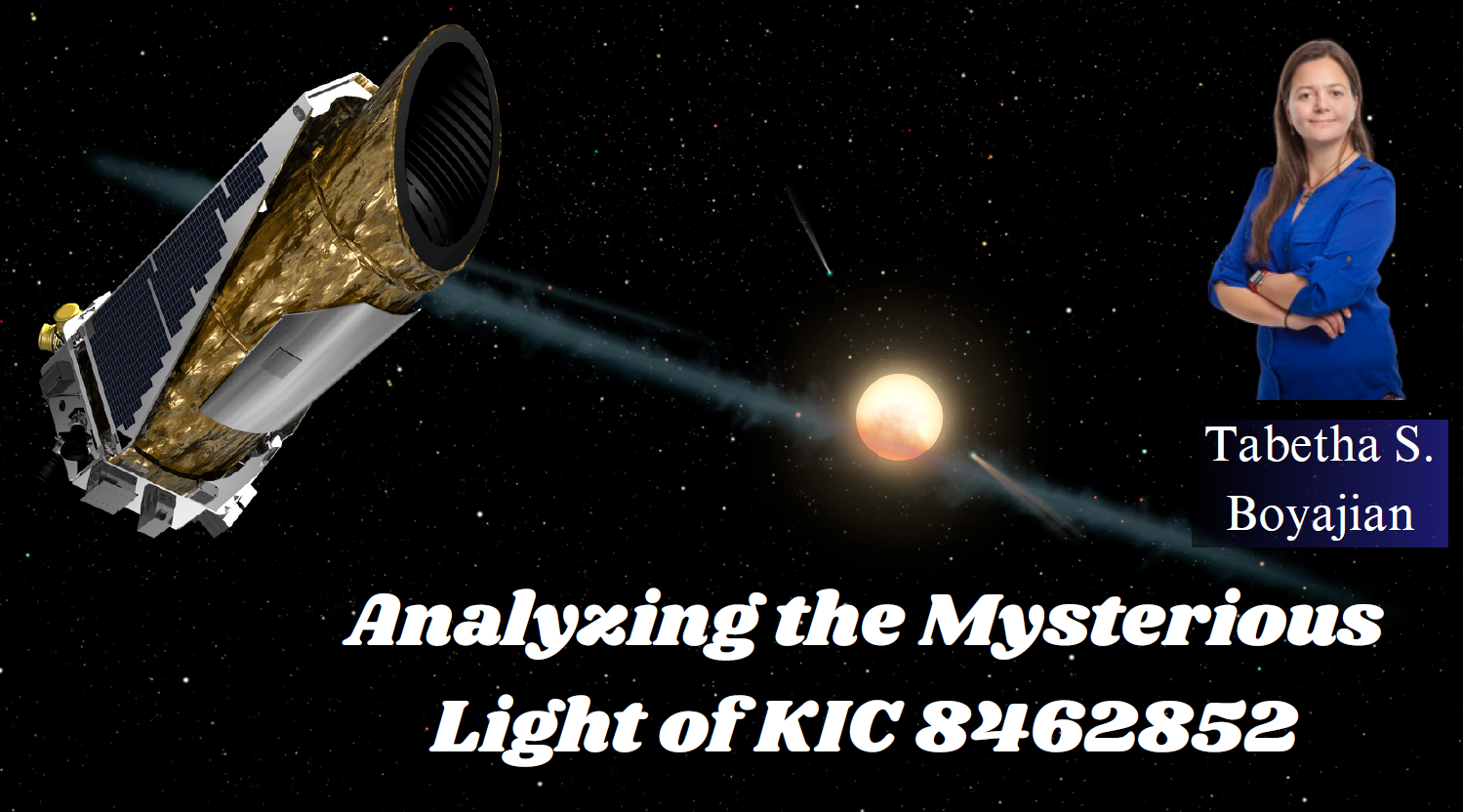
Analyzing the Mysterious Light of KIC 8462852
Alex Cruz Paez, Gerard León Poma, Martí Cadenas Prados
Institut Pompeu Fabra – Martorell (1 bat)
Docent: Francesc Pérez García
Study of Tabby’s Star (KIC 8462852) using Python’s Lightkurve to analyze photometric data from Kepler satellite telescope. Key steps include downloading and visualizing light curves, studying dips via Fourier transforms, and detecting periodicities. This approach aids in exploring anomalies like dust or exoplanet transits.
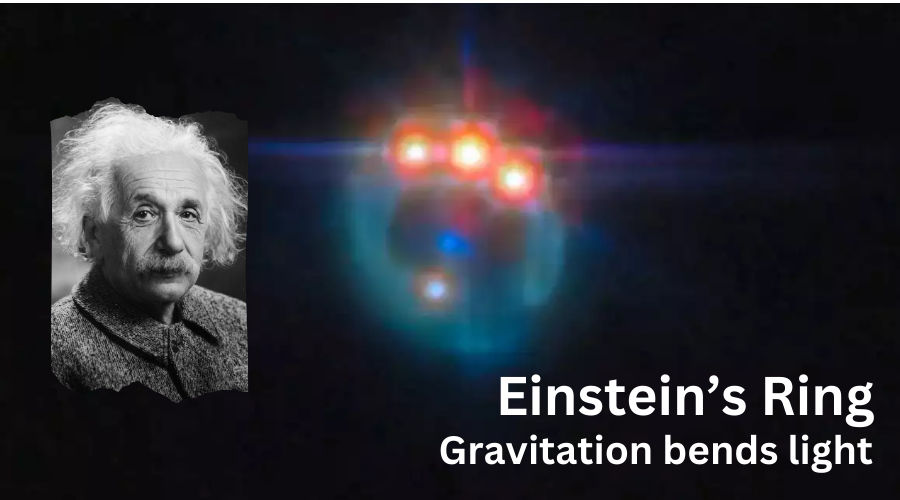
Simulator of light bending with Gravitational Lenses
Jan Barriga Ceballos, Martí Vidal Pino, Oscar Mesa Bellido
Institut Pompeu Fabra – Martorell (1 bat)
Docent: Francesc Pérez García
Eddington’s 1919 expedition confirmed Einstein’s theory of general relativity by observing light bending around the Sun. This phenomenon, gravitational lensing, distorts spacetime and bends light paths. Our created lens simulation allows to change Sun size amd it is available online.
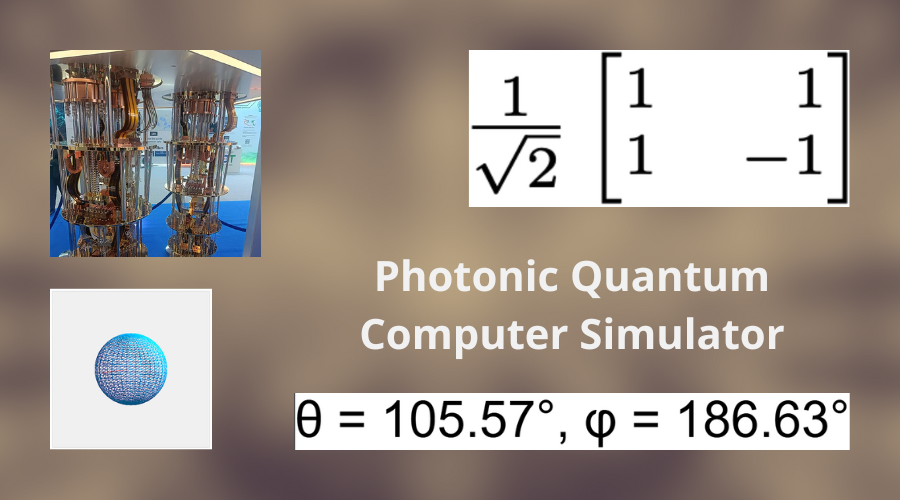
Photonic Quantum Computer Simulator
Freddy Enmanuel Pineda Salgado, Joel Pizarro Castells, Teo Laplana Mora
Institut Pompeu Fabra – Martorell (1 bat)
Docent: Francesc Pérez García
An interactive web tool demonstrating quantum computing principles have been created. It uses 3D Bloch Sphere visualization with Three.js to simulate photonic qubits. Users can apply quantum gates (Hadamard, Pauli-X, Pauli-Z), observe state transitions, and measure qubit probabilities. Educational platform simplifying quantum mechanics concepts for researchers and students.
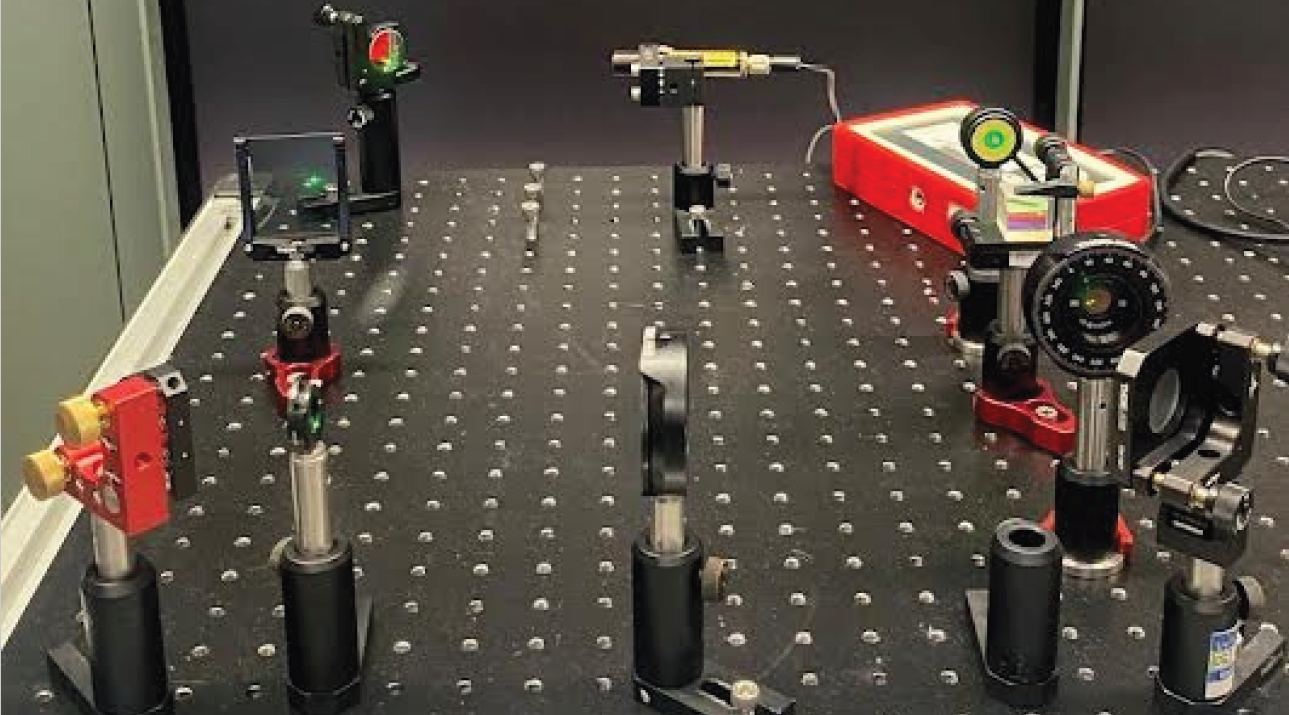
La revolució quàntica
Jan Galcerà Viada, Virginia Pugliese
Institut Damià Campeny – Mataró (2 bat)
Docent: Marta Magarzo
The quantum physics can be applied in practical fields like quantum computation, which we research in our project. Leveraging a workshop from ICFO, we evaluate the BB84 protocol, through a simulation analysis, and we compare between the classic and quantum transistor.
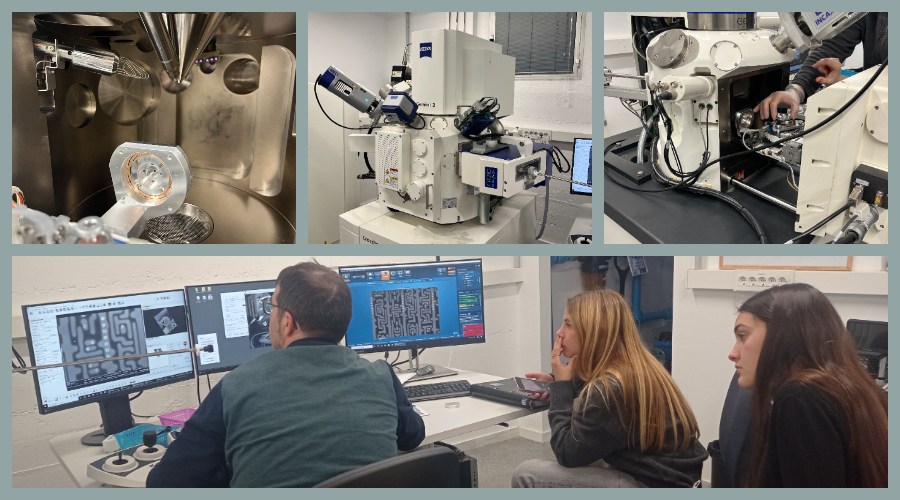
El Món a Escala Nanomètrica: Viatge a Través del SEM
Carla Borsten Sala, Julia Gil de Ferrater, Nara Durà Márquez, Olivia Giménez Torrecillas
Institut Arnau Cadell – Sant Cugat del Vallès (1 bat)
Docent: Laura Parejo
In this work, we will explore the nanometric world through the scanning electron microscope. We will focus on its operation and components. Thanks to the CNM we had the privilege of analyzing different samples, highlighting the precision of its resolution for specialized applications.
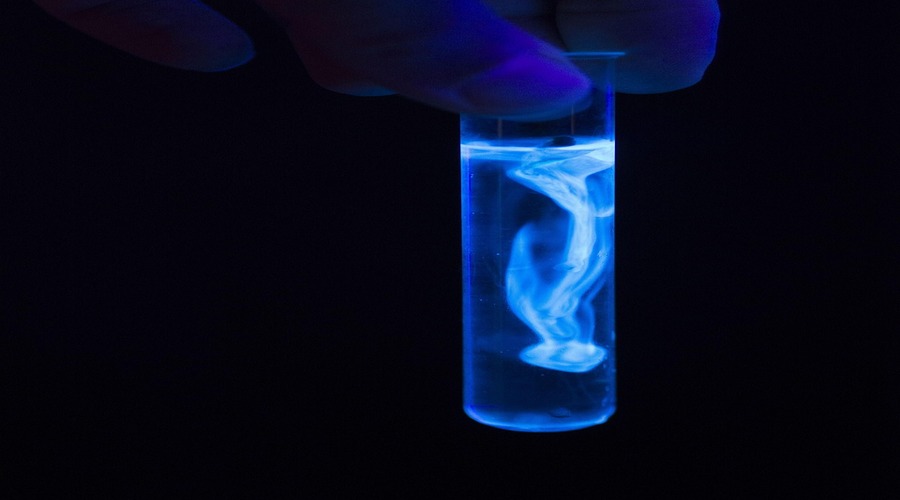
El fenomen de la fluorescència
Damián trasobares Nassir, Emma Fox Trullen, Joan Auladell González, Liliana Canal López
Institut Arnau Cadell – Sant Cugat del Vallès (1 bat)
Docent: Laura Parejo
In our study, we will be focusing on the phenomenon of fluorescence in a macroscopic point of view, but also about what really happens at atomic scale. Furthermore, different applications of fluorescence to society will be explored, and a small experiment will be carried out.
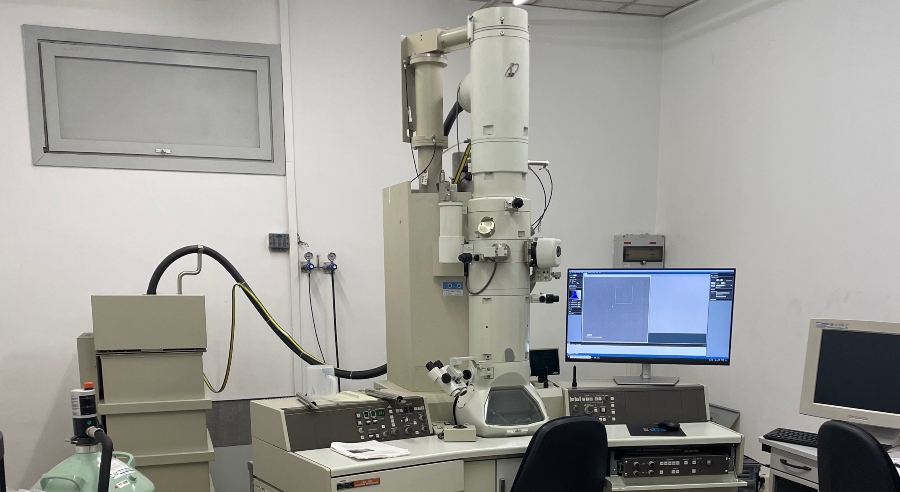
ENFOCANT L’INVISIBILITAT
Guillem Comella Rello, Ivan Fernández Duque, Nacho ginés Álvarez, Uma Boffi Serrano
Institut Arnau Cadell – Sant Cugat del Vallès (1 bat)
Docent: Laura Parejo
This work focuses on the transmission electron microscope (TEM), that uses a beam of accelerated electrons to go through a very thin sample and generate images with atomic resolution. We will analyze its operation and its scientific applications, such as the diagnostics and material characterization of it.
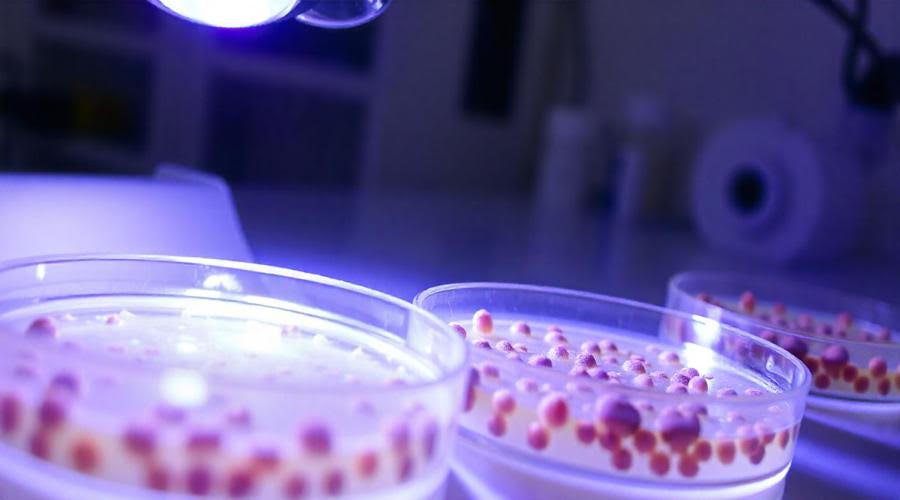
Llum bactericida: l'arma natural contra la infecció
Andrea Llunell Juárez, Marina Tous Fernández, MAteo Romero Guevara
Institut Arnau Cadell – Sant Cugat del Vallès (1 bat)
Docent: Laura Parejo
This study explores UV light’s effects on bacteria, highlighting its use in medical fields as an effective antibacterial. Escherichia coli was exposed to UV-A/UV-B. Results showed no significant inactivation, likely due to insufficient exposure time, intensity, or the absence of higher-energy UV-C light.
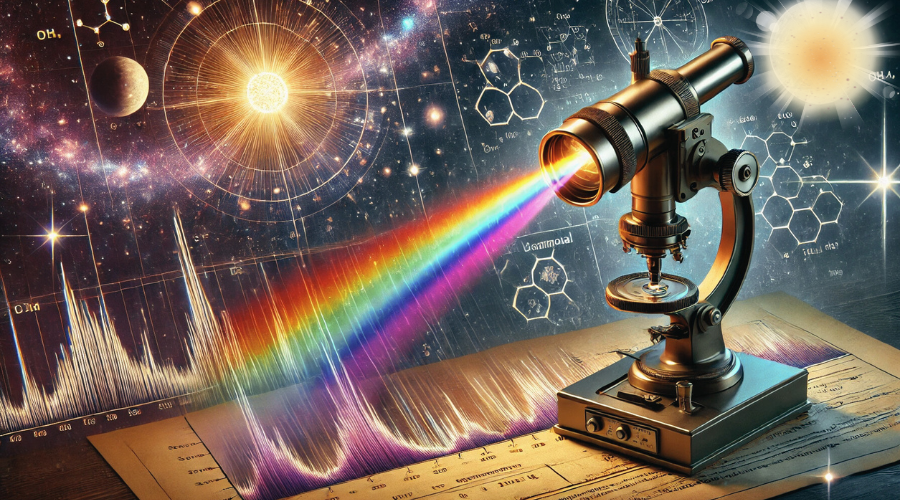
Tot està format per pols d'estrelles. Descobrim que ens composa?
Àgueda de Azcoitia Serra, Angelina Pardo Barragan, Carolina Camps Roset, Natalia Borrego Matarín, Sara Ruiz Vázquez
Institut Arnau Cadell – Sant Cugat del Vallès
Docent: Laura Parejo
This study talks about the star life cycle, looking to understand how scientists study the stellar composition, based on the stelar decomposition of the white light spectrum and spectroscopy. We also have built a spectroscope to demonstrate the research in a practical way with flame experiment.
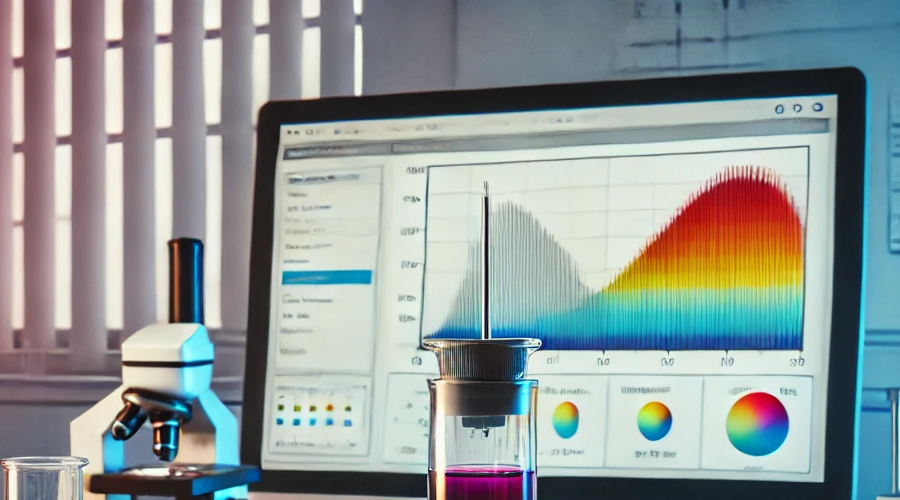
Explorant l’Invisible
Abraham Hernandez Rodríguez, Guim Giralt Asencio, Lucas Cardona, Mateo Haghenbeek
Institut Arnau Cadell – Sant Cugat del Vallès (1 bat)
Docent: Laura Parejo
This work explains UV spectroscopy, a technique to detect and analyze chemical compounds by measuring their absorption of ultraviolet light. It describes the function and applications of a spectrophotometer. An experimental section was also conducted, analyzing various samples with a spectrophotometer.
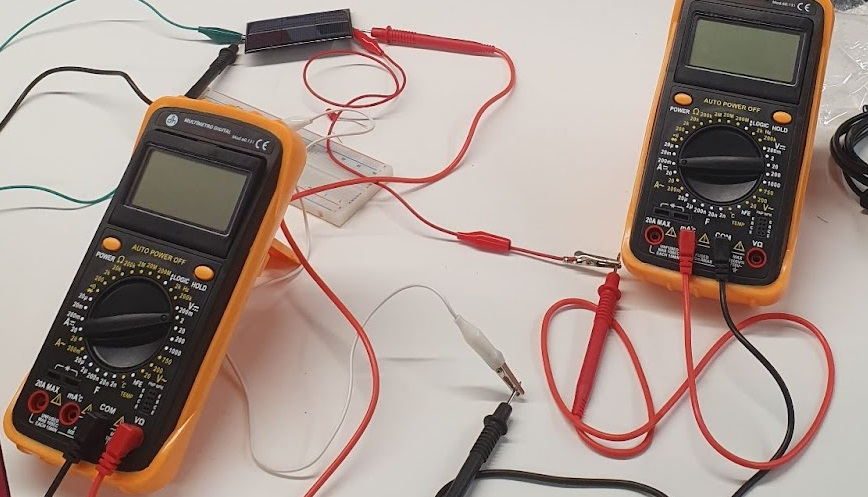
Measurement of the efficiency of a solar panels
Adrià Gilete Cortes
St. Peter’s School Barcelona – Barcelona (2 bat)
Docent: Francesc Closa
My project consists of utilising different light bulbs that produce different wavelengths of light in order to see how well a solar panel absorbs them and what the ratio of efficiency of absorption is. My method will simply consist of shining these lights towards the solar panel and measuring the power generated compared to the power that is being used by the light bulb. The results show that the efficiency is still very low and there is still much more room for improvement.

DETECCIÓ DE CÚMULS DE PLÀSTICS EN L'OCEÀ MITJANÇANT SATÈL·LITS AMB SENSORS D'ESPECTROMETRIA ELECTROMAGNÈTICA
Guillem Ribas Sanz
Institut Pedralbes – Barcelona (2 bat)
Docent: Iolanda Huguet
This project explores advanced satellite technologies for detecting floating marine plastics. The Sentinel-2, analyze how plastics reflect light and, combined with an algorithm, are able to locate these plastics. Finally, this project concluded with the creation of an algorithm capable of locating potential plastics using the data from the satellites.
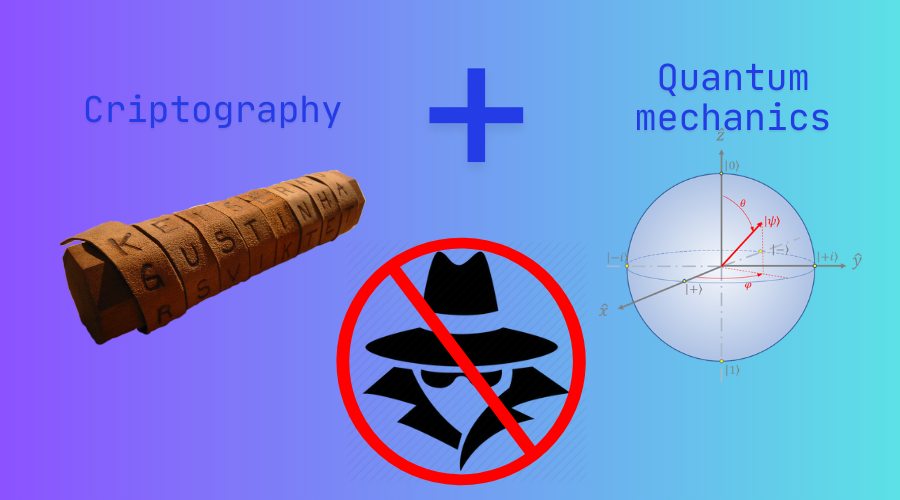
Criptografia Quàntica
Xavier Luis Santos
IES Puig Castellar – Sta. Coloma de Gramanet (2 bat)
Docent: Gisela García Bardaji
The paper focuses on studying quantum cryptography, which promises to protect with 100% efficiency from quantum computers. It performs a classical simulation of the BB84 protocol of quantum cryptography, showing how it works. The conclusion shows some lack of effectiveness in certain areas, which can be (or not) solved in the future.
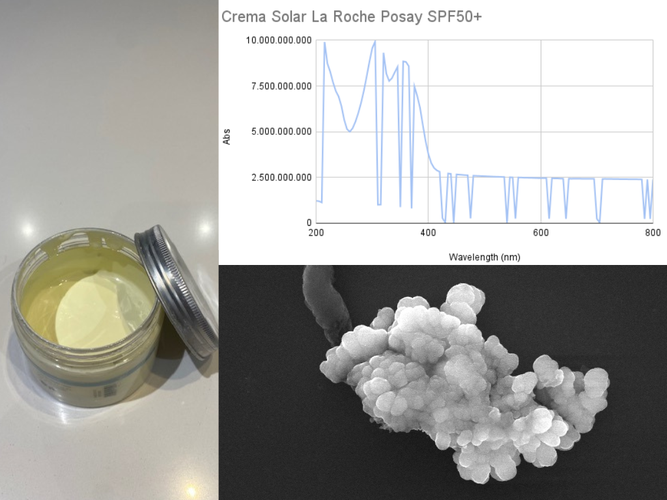
L'efectivitat dels filtres solars presents a les cremes solars
Anna Zapata Romero, Carla Pont Gili
Col·legi Santo Angel – Gavà (2 bat)
Docent: Carmen Gàmez
This research analyzes the effectiveness of sunscreen filters using spectroscopic techniques. Results show that while physical filters like ZnO work, homemade sunscreens absorb significantly less UV radiation than commercial ones, highlighting the need for strict formulation standards.
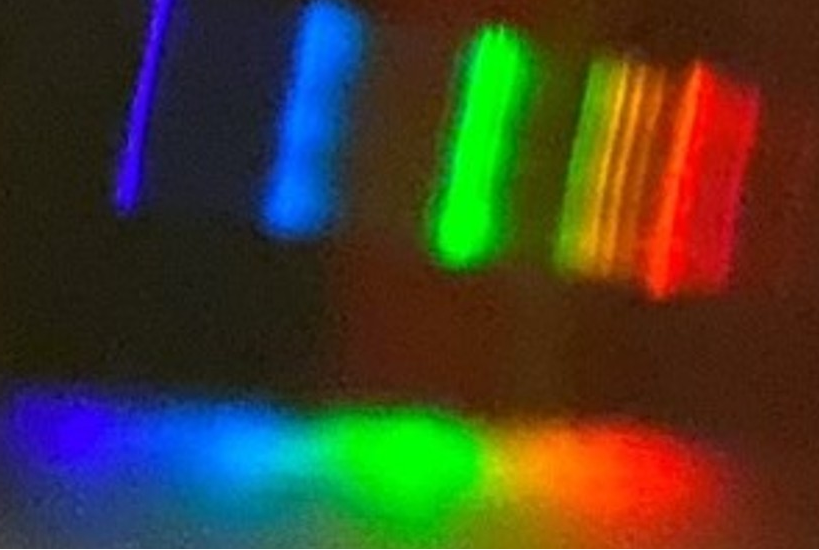
Experiments de física moderna
Manuela Montero Sánchez-Andrade
Col·legi Badalonès – Badalona (2 bat)
Docent: Jordi Rubio Soriano
The dissertation explores whether experimental physics is accessible to all students. The hypothesis is that fundamental physics laws can be verified through simple experiments with accessible materials. Two experiments were conducted: determining Planck’s constant via LEDs and building a spectrometer to observe emission spectra. Both experiments yielded expected results, confirming the hypothesis that experimental physics can be learned through simple, affordable methods.
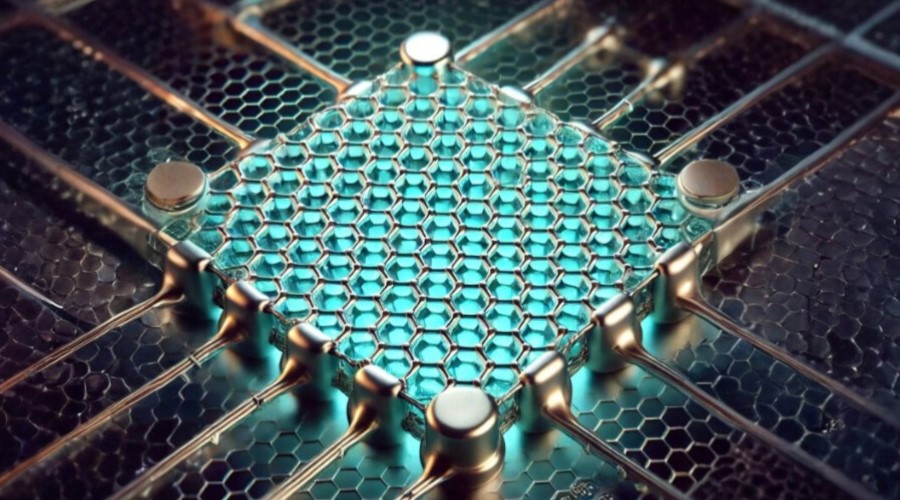
Estudi experimental de les propietats electròniques del grafè, un material de dues dimensions
Martí Casanova
Institut Damià Campeny – Mataró (2 bat)
Docent: Marta Magarzo Carrillo
In this report we present the fabrication of a graphene field-effect transistor (GFET), beginning with the isolation of a single atomic layer of carbon, graphene, and identifying using advanced optical techniques. We then detail the fabrication of GFETs employing cutting-edge techniques, such as electron-beam lithography and thermal evaporation, within a highly controlled cleanroom environment to ensure minimal contamination.
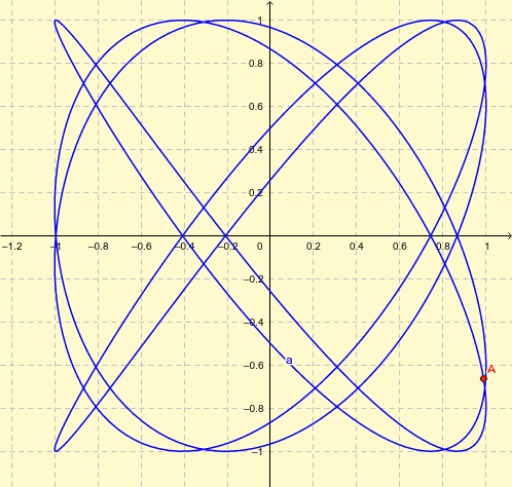
SONOR-ART: Traductor d'ONes
Gabriel Garcia Aparicio, João Pedro Yin, Noah Rosell Mompó, Yousra Saidi
IES Joan Fuster – Sueca (1 bat)
Docent: Eva Maria Pérez Gómez i Jordi Esteve Garcia
Have you ever wondered, what if we could see music? Our project, Sonor-Art, was born with the intention of developing the relationship between “deaf” people with music. For that reason we constructed our project with materials that were completely recycled and reused with the objective of being aligned with the 2030 Agenda. Moreover, Sonor-Art has allowed us to study various very interesting physical and mathematical phenomena through experimentation (Snell’s law, standing waves, resonance, etc.). As for the construction, is very simple, there is a sound cavity with a membrane that has a mirror attached, as well as PVC pipes and a source of light that “emits infrared” lights. Furthermore, it has a very simple functioning, the beam of light reflects in the screen due to the reflection in the mirror that vibrates thanks to the sound waves produced. Consequently, the point in the screen moves creating different figures, this way, sound becomes visible.

Aplicacions de la física quàntica en la medicina
Hajar Azibou
Institut Can Planas – Barberà del Vallès (2 bat)
Docent: M
Quantum physics plays an important role in medicine, enabling technologies like X-rays. This project explores how quantum principles improve diagnostics and treatments. It includes a replication of the double-slit experiment and a futuristic proposal for a portable X-ray machine through a visual model.

